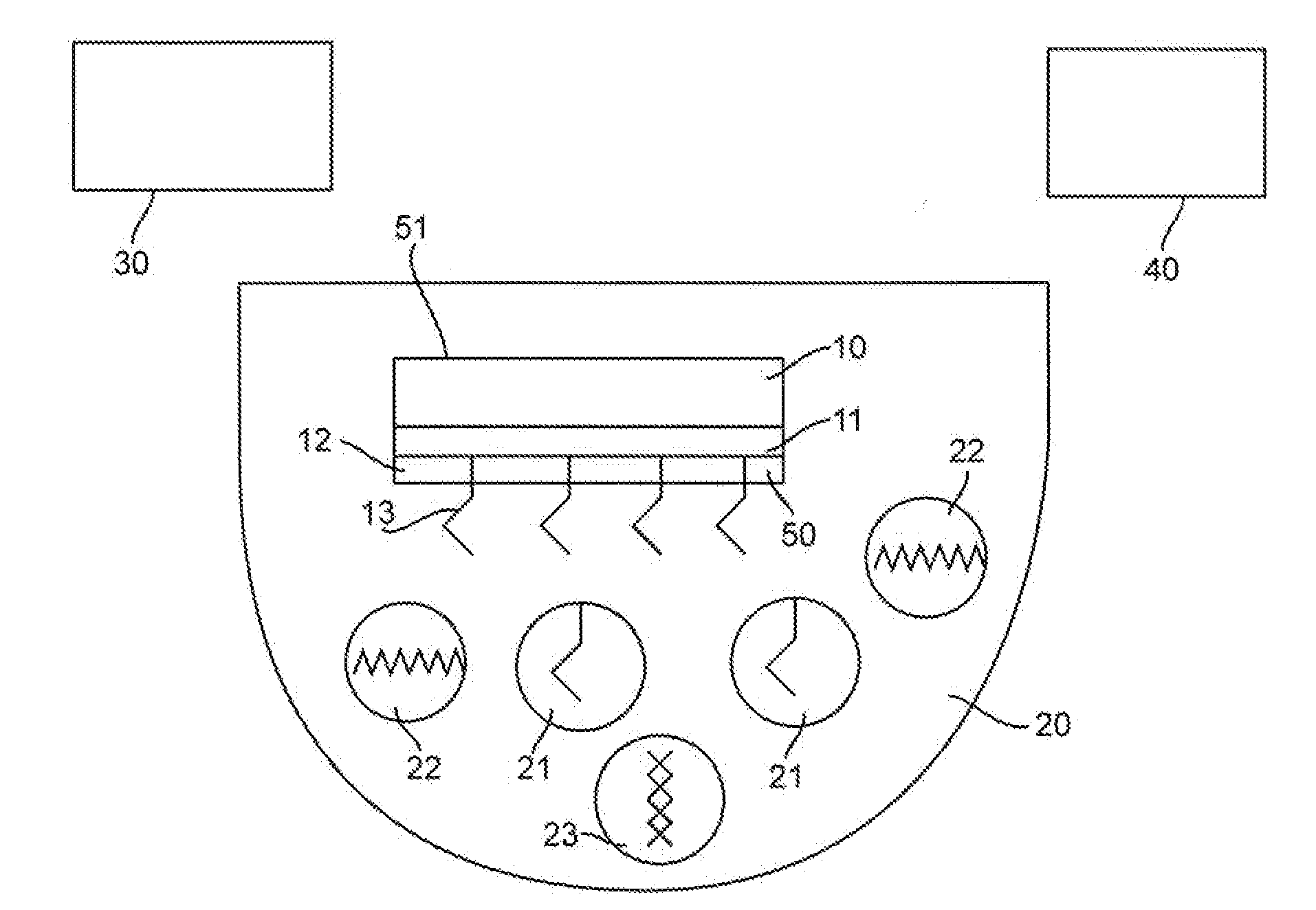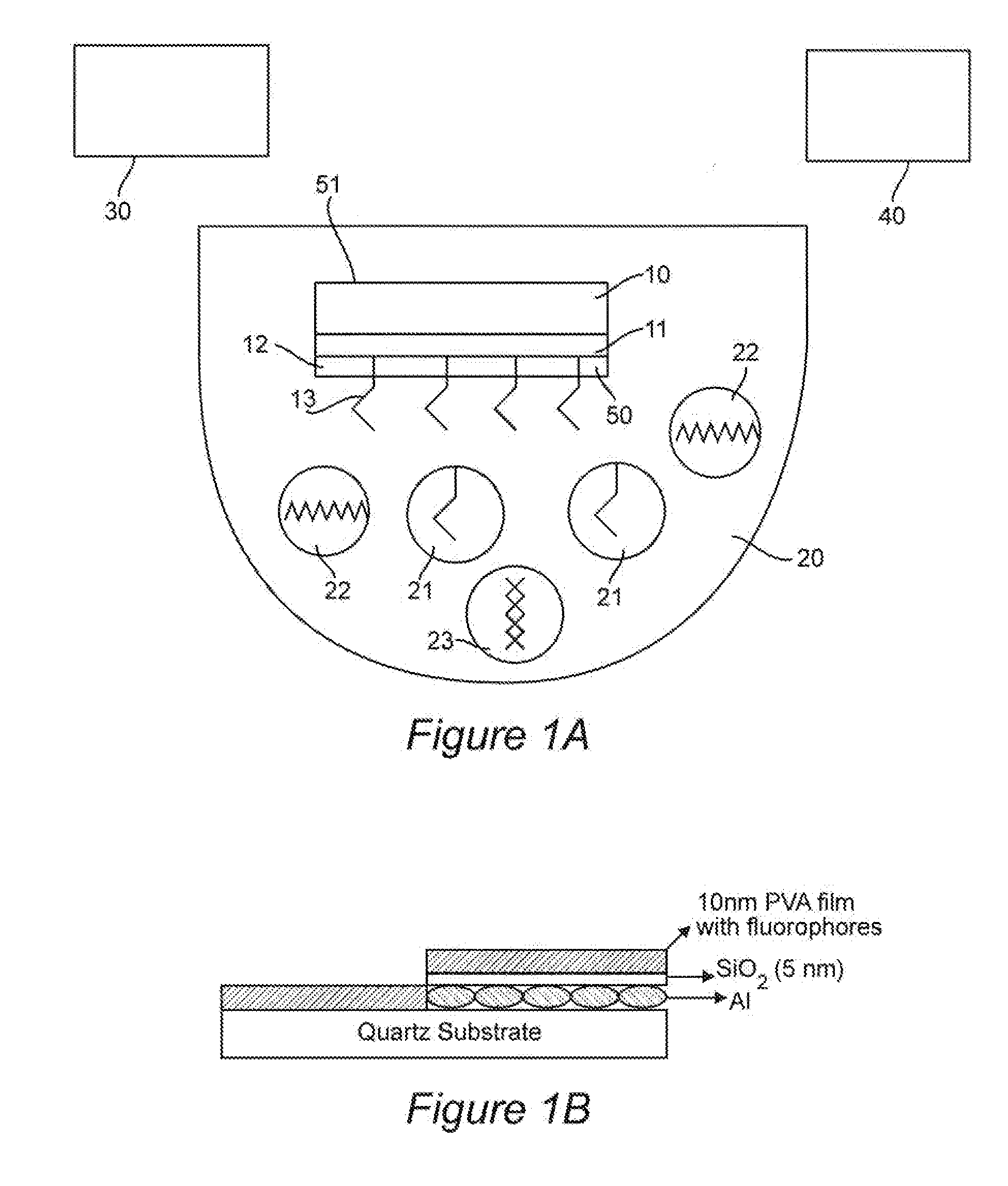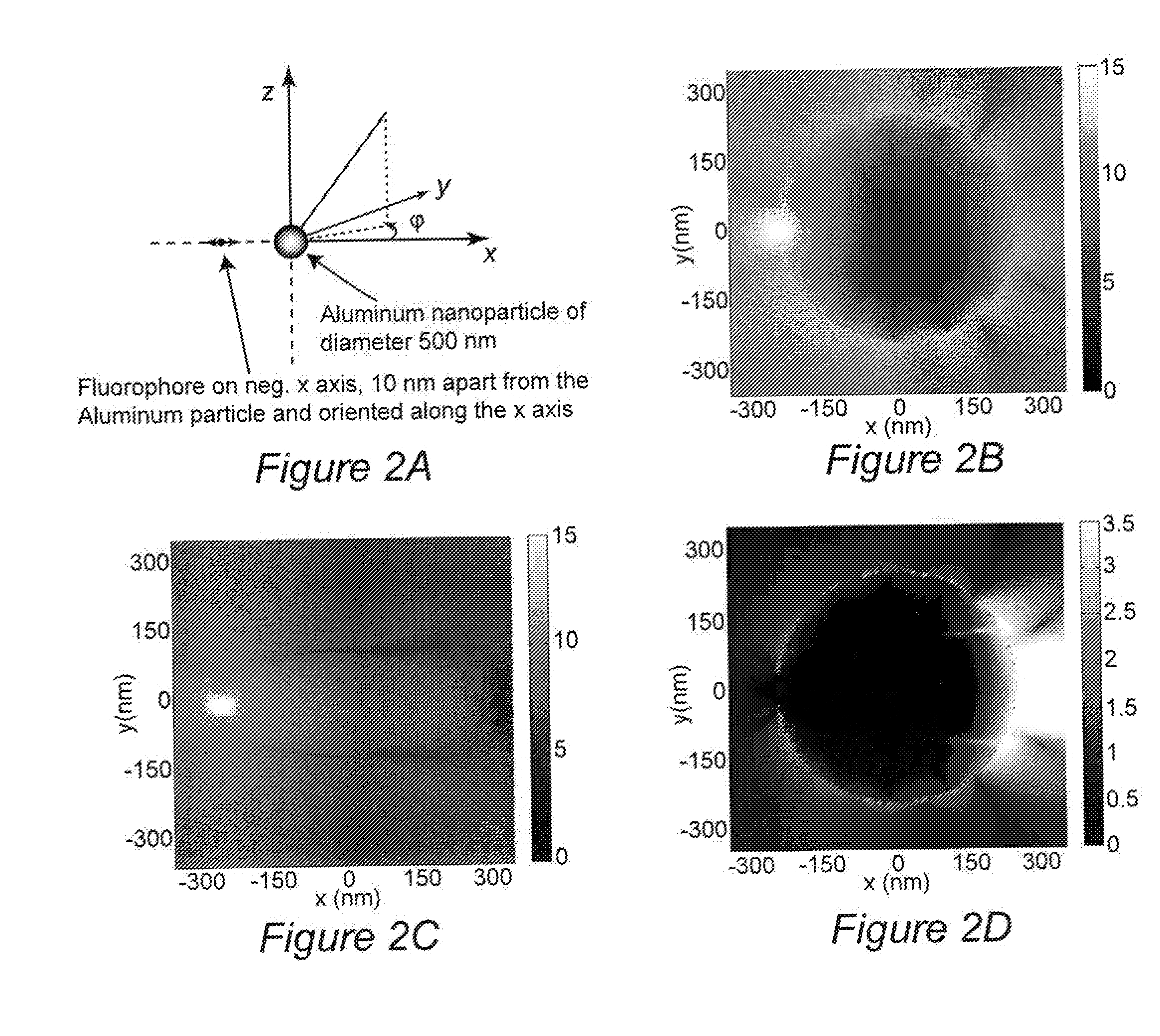Metal-enhanced fluorescence for the label-free detection of interacting biomolecules
a biomolecule and label-free technology, applied in the field of metal-enhanced fluorescence for the label-free detection of interacting biomolecules, can solve the problem of reducing artifacts, reduce and eliminate extrinsic labels. , the effect of reducing the cost and complexity of assays
- Summary
- Abstract
- Description
- Claims
- Application Information
AI Technical Summary
Benefits of technology
Problems solved by technology
Method used
Image
Examples
example 1
REFERENCES FOR EXAMPLE 1
[0072](1) van Dyke, K. Luminescence immunoassay and molecular applications; CRC Press: Boca Raton, 1990.[0073](2) Hemmila, A. Application of fluorescence in immunoassays; John Wiley & Sons: New York, 1992.[0074](3) Walker, N. J. Science 2002, 296, 557-559.[0075](4) Livak, K. J.; Flood, S. A.; Marmaro, J.; Giusti, W.; Deetz, K. PCR Methods Appl. 1995, 4, 357-362.[0076](5) Lakowicz, J. R. Anal. Biochem 2001, 298, 1-24.[0077](6) Sokolov, K.; Chumanov, G.; Cotton, T. M. Anal. Chem. 1998, 70, 3898-3905,[0078](7) Chumanov, G.; Sokolov, K.; Gregory, B. W.; Cotton, T. M. J. Phys. Chem. 1995, 99, 9466-9471.[0079](8) Geddes, C. D.; Cao, H.; Gryczynski, I.; Gryczynski, Z.; Fang, J. Y.; Lakowicz, JR. J. Phys. Chem. A 2003, 107, 3443-3449.[0080](9) Messinger, B. J.; von Raben, K. U.; Chang, R. K.; Barber, P. W. Phys. Rev. B 1981, 24, 649-657.[0081](10) Ray, K.; Badugu, R; Lakowicz, J. R. Am. Chem. Soc. 2006, 128, 8998-8999.[0082](11) Ray, K.; Badugu, R; Lakowicz, J. R. La...
example 2
On the Possibility of Using Aluminum Nanoparticles as Substrates for Metal-Enhanced Fluorescence in the Ultra-Violet Region for the Label Free Detection of Biological Molecules
[0101]We used the finite-difference time-domain method to predict that aluminum nanoparticles can be used as efficient substrates for metal-enhanced fluorescence in the ultra-violet region for label free detection of biological molecules, Our calculations focus on the fluorophore emission in the range of 300-420 nm which is typical of intrinsic fluorescence emission of proteins. In all of our calculations, the fluorophore is modeled as a radiating point dipole with orientation defined by its polarization. When a fluorophore is oriented perpendicular to the metal surface, our calculations reveal a large increase in total power radiated through a closed surface containing the fluorophore-metal nanoparticle system, in comparison to the isolated fluorophore. In contrast, significant emission quenching occurs if th...
example 3
REFERENCES FOR EXAMPLE 3
[0140]1. X. Yu D. Xu, Q Cheng. Label-free detection methods for protein microarrays. Proteomics 6 (2006) 5493-5503.[0141]2. M. A, Cooper, Non-optical screening platforms: the next wave in label-free screening?Drug Discov. Today 11 (2006) 1068-1074.[0142]3. L. Sun. C. Yu, J. Irudayaraj. Surface-enhanced raman scattering based nonfluorescent probe for multiplex DNA detection. Anal, Chem, 79 (2007) 3981-3988.[0143]4. A. E. Grow, L. L. Wood, J. L. Chaycomb, P. A. Thompson. New biochip technology for label-free detection of pathogens and their toxins. J. Microbiol, Methods 53 (2003) 221-233.[0144]5. M. Vestergaard, K. Kennan, E. Tamiya. An overview of label-free electrochemical protein sensors. Sensors 7 (2007) 3442-3458.[0145]6. J. A. Hansen, J. Wang, A-N, Kawde, Y. Xiang, K. V. Gothelf, G. Collins (2006) Quantum-dot / aptamer-based ultrasensitive multi-analyte electrochemical biosensor. J. Am. Chem. Soc. 128 (2006) 2228-2229.[0146]7. F. Patolsky, G. Zheng, C. M. L...
PUM
| Property | Measurement | Unit |
|---|---|---|
| size | aaaaa | aaaaa |
| size | aaaaa | aaaaa |
| size | aaaaa | aaaaa |
Abstract
Description
Claims
Application Information
 Login to View More
Login to View More - R&D
- Intellectual Property
- Life Sciences
- Materials
- Tech Scout
- Unparalleled Data Quality
- Higher Quality Content
- 60% Fewer Hallucinations
Browse by: Latest US Patents, China's latest patents, Technical Efficacy Thesaurus, Application Domain, Technology Topic, Popular Technical Reports.
© 2025 PatSnap. All rights reserved.Legal|Privacy policy|Modern Slavery Act Transparency Statement|Sitemap|About US| Contact US: help@patsnap.com



